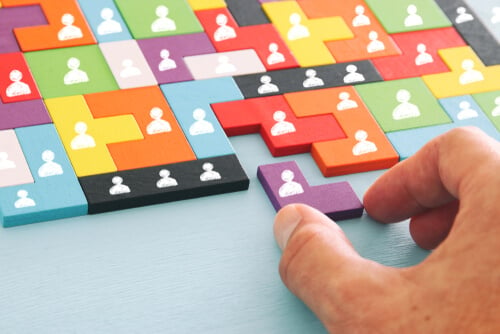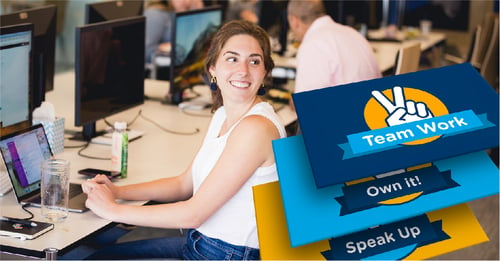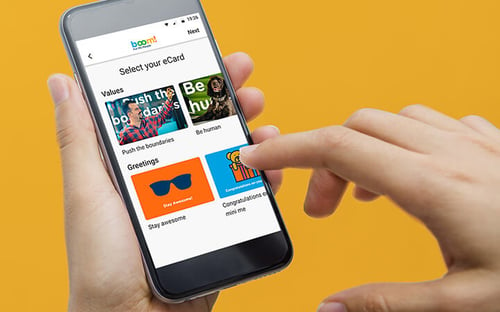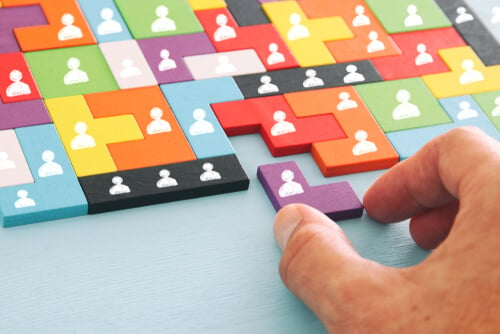
5 min read
One of the questions I’m asked time and time again is: How do I design and deliver a recognition programme that works for a multi-generational workforce? Great question since we’re all dealing with the challenges of multiple generations in the workplace, but one that’s often overlooked, with companies developing a one-dimensional approach thinking that it will magically work for everyone.
The problem with this is that each generation comes with different perspectives, different experiences and absolutely different demands that need to be addressed and met. Add to this the differences that enter into the equation based on culture, personality styles, etc., and it’s a disaster waiting to happen if we don’t address it head on.
Need proof? Let’s talk makeup, comparing how I approach it compared to my 18-year old daughter. I was brought up with what I’d call “basic” makeup - foundation, eye shadow, eyeliner and mascara, so that’s enough for me.
My daughter, on the other hand, has been brought up with multiple products for each of these (e.g. pencil eyeliner, gel eyeliner, liquid eyeliner, etc.) as well as many more products that quite frankly I still don’t understand! Give us the same products, and one or both of us will surely be disappointed. That’s exactly what happens with recognition.
Though we all want to be recognised, the why, when and how we are recognised can differ greatly based on our generational expectations and/or the experiences we’ve had in our personal and working lives.
So let me share with you some differences I’ve seen between generations and why multi-generational technology in the workplace is key. Keep in mind, no one falls neatly into just one category as expectations are based on experiences but also individual preferences and styles.

Recognition for Baby Boomers
This group grew up in a world where recognition was rarely spoken about and rarely given. If it was, it was given as a thank you for their years with the company, or for contributions on specific work or projects through ad hoc or annual bonuses. It was very much top down, so recognition was given from the company, possibly from their manager.
What this means is that recognition, especially recognition given regularly, may not be something that is expected or natural to them as it wasn’t part of their upbringing.
You’ll need to help them understand the power of recognition, making them feel comfortable giving and receiving it.
They may, however, expect to be recognised for years of service, since this was the norm for them. Keep this in mind if you decide to remove or change your long service programme, as it may be seen as something very important to them.

Recognition for Generation X
This group grew up in a world where more regular recognition was slowly becoming common practice with the introduction of programmes such as annual recognition awards or possibly quarterly awards. It was again top down, with it coming from the company but also more and more from their manager.
What this means is that recognition is something that they are more familiar with, but since it was only given to the “best of the best,” it may not be something they expect. They may not be comfortable with giving recognition, thinking that recognition needs to be rationed for only the best, and also because they may not have experience with the concept of peer-to-peer recognition.
You’ll need to help them understand that recognition is a gift that can, and should, be given often, recognising behaviours and actions “in the moment,” so recognising everyday moments that have an impact on their colleagues and the business.

Recognition for Generation Y
Generation Y, often called the “trophy generation” when it comes to recognition, grew up receiving a trophy for everything and anything in their personal life, and at work many would have had been exposed to a continuous approach to recognition, where it’s given more frequently. They would have also experienced recognition from many directions, so not just top down from the company and their managers.
What this means is they expect recognition to be less formal and more frequent, not wanting to wait five years for a long service award or a year for an annual award. They want to feel deeply a part of it, as it is a natural way of working to many of them, and they expect recognition to mirror how they recognise and react to their friends outside of work, which is in a social context.
.png?width=500&name=ecard-delight-customers%20(1).png)
Recognition for Generation Z
This group has grown up in a world where technology is all around them, using and relying on it to help them as they go about their day. Integral to this is the use of social media, using it as a way to connect and interact with their friends and the world around them.
What this means is that they expect recognition to behave in a similar way, being able to access and be a part of recognition as easily and as often as they do with Snapchat, Instagram, or whatever social media platform they use. Even more so than Generation Y, they will have little interest and patience for any programme that involves too much effort or does not allow the social side of it.
Our employee engagement mobile app, the Connect+ app, lets you connect with your on-the-go employees, from any location, at any time to make recognition accessible.

No matter what generation you’re building a recognition programme for, the key to success has and always will be variety. Since we don’t have one “size” of employee we can’t expect to have a “one-size-fits-all” approach to recognition.
Understand the needs of each generation, each personality style, each employee, and then develop a programme that delivers what they need. Going back to my makeup analogy, if you do this, you’ll certainly have the recognition “look” you’re aiming for.

 Debra Corey
Debra Corey

